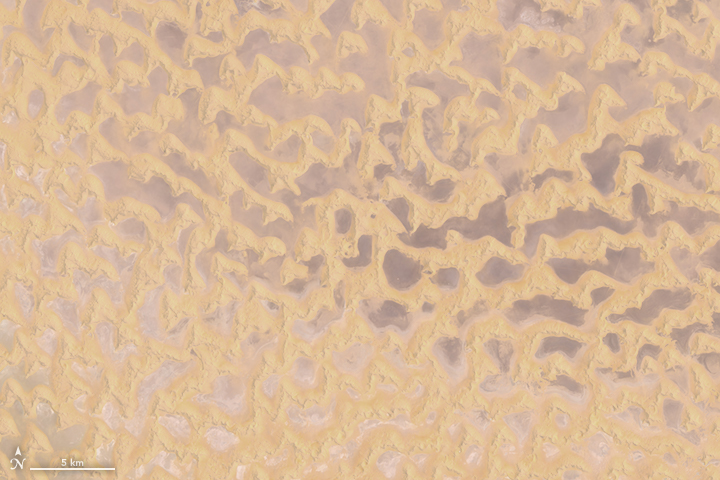When Tropical Cyclone Mekunu rumbled over Oman in May, it dumped torrential rainfall on the city of Salalah. Now, a new satellite image reveals the extent of unloaded rainfall in the nearby desert of Rub’ al-Khali, the world’s largest sand desert and (normally) one of the driest places on Earth. It is full of lakes! This water lake phenomenon has not been seen in the desert in almost two decades.

Spanning the southern third of the Arabian Peninsula, the Rub’ al-Khali is the world’s largest contiguous sand desert. It is also one of the driest places on Earth. However, that status temporarily changed after Tropical Cyclone Mekunu passed over the region in May 2018.
الربع الخالي بعد إعصار ماكونو..
الربع المليان! pic.twitter.com/IQZoeUCwx0— Matar مطر الأحمدي (@Matar_Alahmadi) May 28, 2018
The image, taken by NASA’s Operational Land Imager three days after the storm brought heavy rains to the region—Salalah saw 11 inches of precipitation in just 24 hours, more than double its yearly average—captures the arid desert’s typical large swaths of sand with ripples sculpted by wind. But there’s one novel feature: water lakes in the flat lowlands between the sand dune tops.

This water lake phenomenon has not been seen in the desert in almost two decades, according to NASA’s Earth Observatory. The desert, also known as the Empty Quarter, receives about 1.2 inches of rain per year on average.

Aside from being quite the sight, these bountiful rainwater deposits could be beneficial for local business. “The land will need 30 days to sprout their summer plants,” Ali Al- Hatish, a regular visitor desert visitor, told Al Arabiya.net. After that, camel owners expect this vegetation to feed their camels for the next two years. The paper also reports that the rare sight of lakes interspersed with dunes could send to tourists flocking to the area.

Tropical Cyclone Mekunu spun up in the Arabian Sea in late May. Extremely warm waters (31-32 degrees Celsius or 88-90 degrees Fahrenheit) fed the storm until its winds equalled that of a Category 3 hurricane prior to making landfall in the Arabian Peninsula, according to The Weather Channel.
This made Mekunu’s landfall historic; the Arabian Peninsula sees a tropical cyclone every year or every couple of years, but a tropical cyclone making landfall with hurricane-like wind speeds is a rarity in Oman and Yemen.

As myriad media outlets reported, Oman and Yemen bore the brunt of the tropical cyclone with destructive winds, heavy rainfall, and flooding wreaking havoc in cities. These new images are a reminder that powerful storms have the potential to dramatically reshaping natural landscapes, too.
Expect an amazing flower bloom end of this month! That will be awesome!
Follow us: Facebook and Twitter
Saudi Arabia’s Empty Quarter now ‘full’ with lakes after Cyclone Mekunu
Rain Soaks The Empty Quarter
The World’s Largest Sand Desert Is Covered in Lakes After Tropical Cyclone Mekunu












[…] http://strangesounds.org/2018/06/the-world-largest-sand-desert-was-covered-in-lakes-after-tropical-c… […]
You think so …’cause nowadays over here in Macedonia are happening some strange rainfalls too..
This was thanks to HAARP.